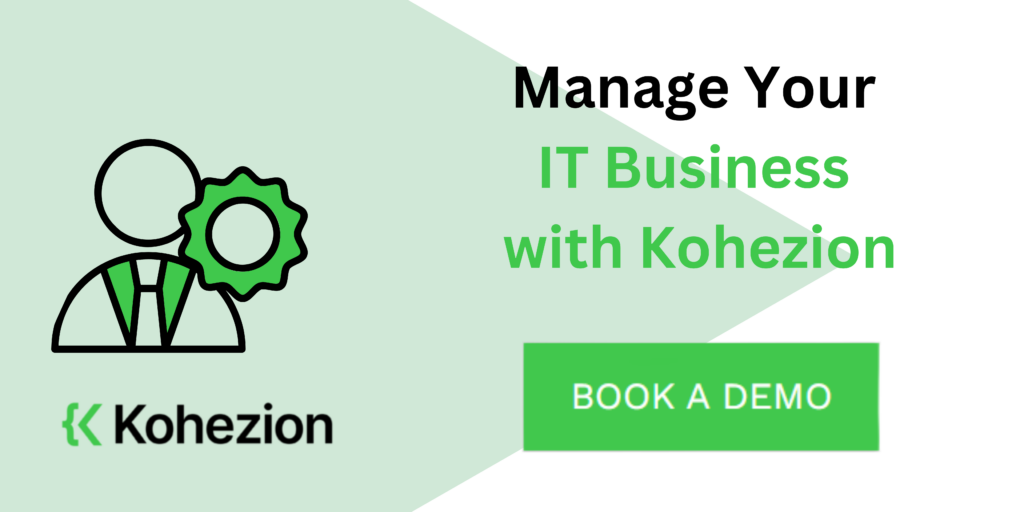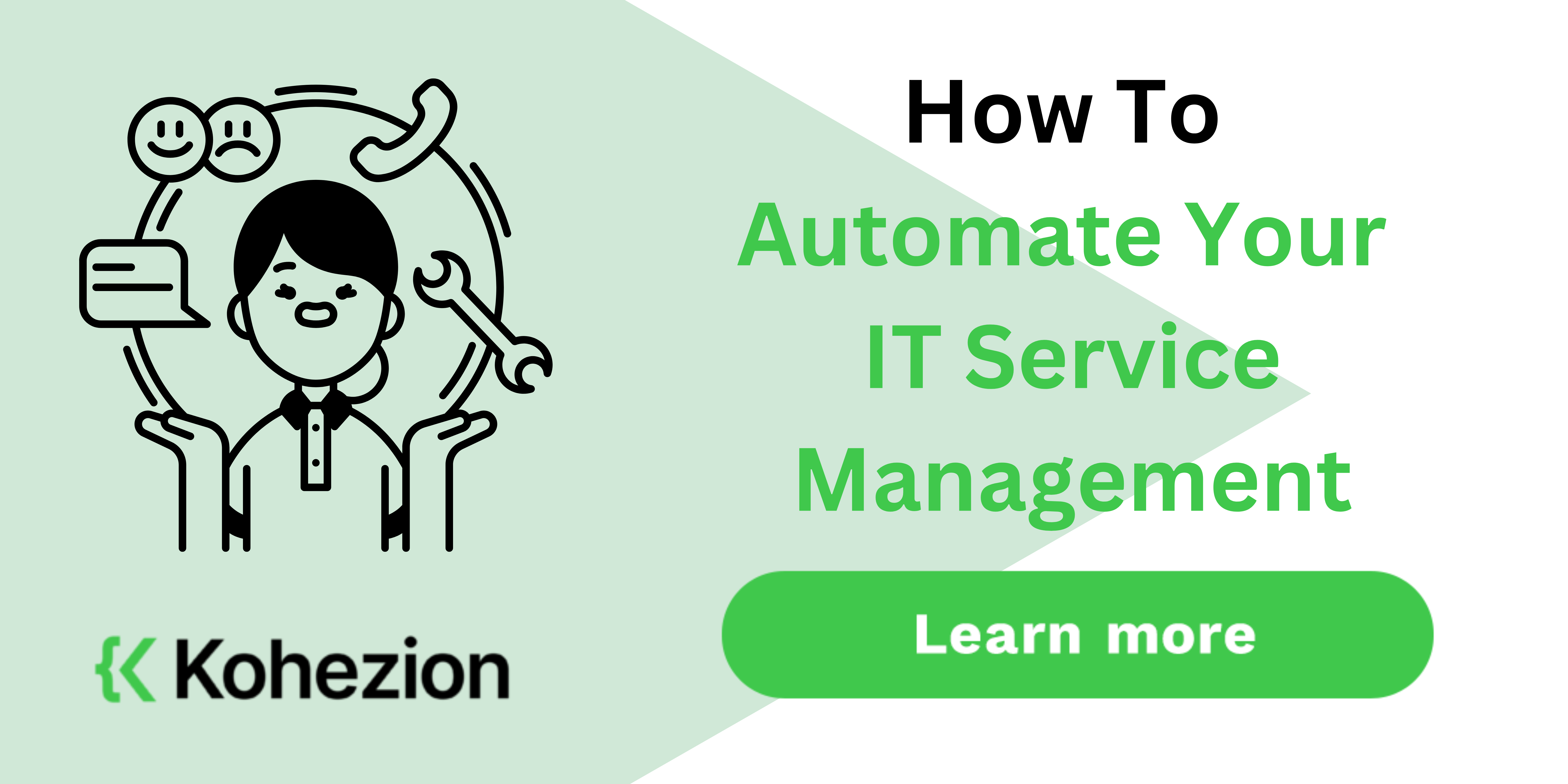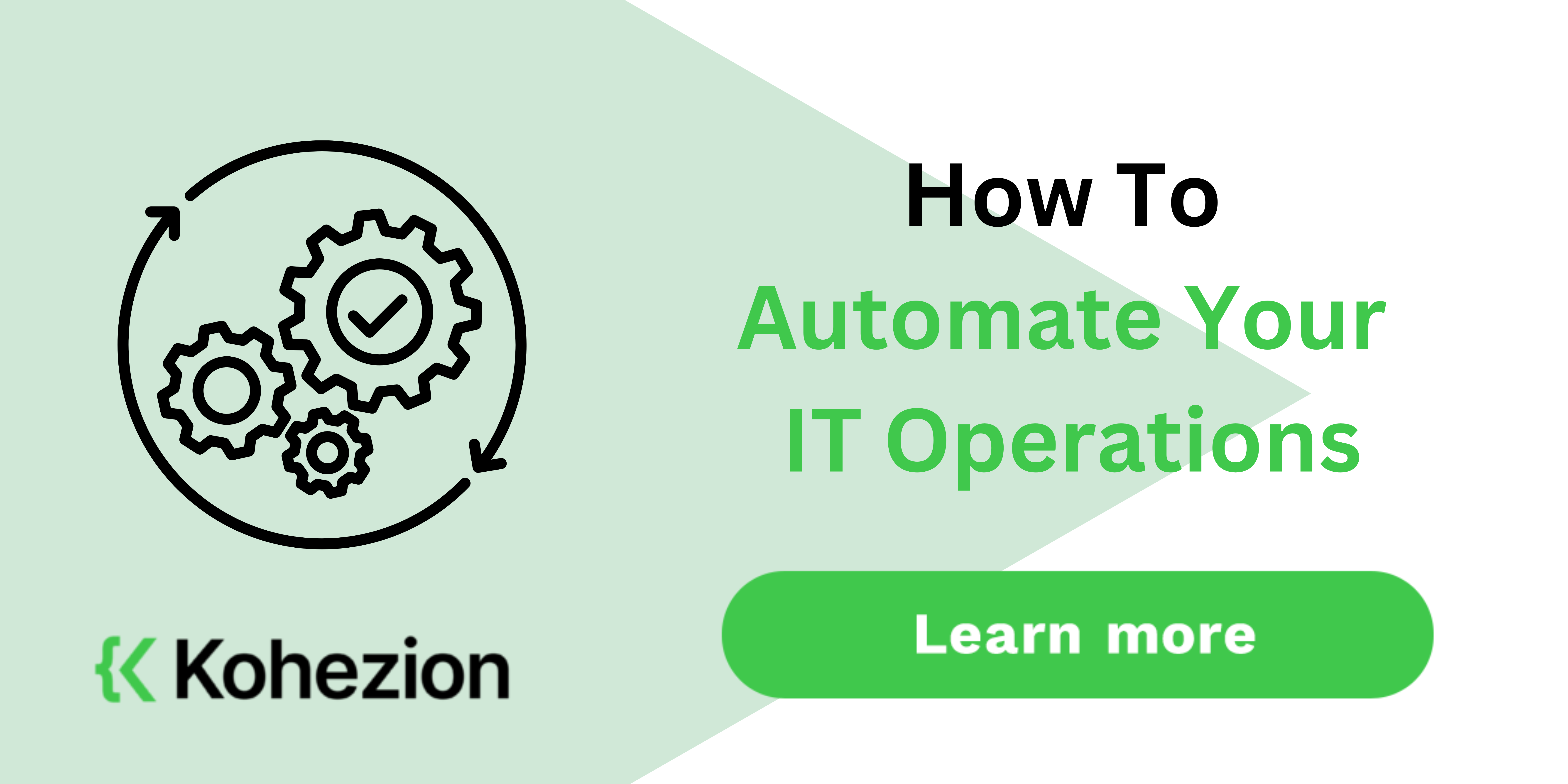IT Business Management (ITBM) is a crucial part of modern organizations, helping align IT services with business goals. In 2023, a survey by Gartner found that 80% of CEOs increased digital technology investments to counter economic pressures. This statistic highlights the growing importance of ITBM in driving efficiency and productivity.
Understanding ITBM can help businesses streamline processes, reduce costs, and improve service delivery, ensuring that IT initiatives support business strategies effectively.
What is IT Business Management?
IT Business Management, or ITBM, orchestrates business, technology, and management principles to increase an organization's IT capabilities. It ensures that IT projects and expenditures make technical sense, align with and support the company's objectives, and add tangible value to the business.
ITBM encompasses activities like strategic planning, financial stewardship, and resource allocation. It connects IT within the wider business framework, guaranteeing that your technological infrastructure is cutting-edge, cost-effective, appropriately resourced, and in tune with your business goals.
Why Is IT Business Management Important?
IT Business Management is important because it ensures that IT efforts directly contribute to achieving business objectives.
- Economic Growth and Competitiveness: ITBM empowers companies to adopt the latest technology trends and practices that drive innovation and foster economic growth. Businesses can seamlessly adapt to changing market demands, benefiting from improved efficiency and productivity.
- Maintaining Relevance in the Digital Age: ITBM is essential for businesses to remain relevant. It enables them to effectively manage digital transformations and incorporate new technologies while aligning with their strategic goals.
- Cost-effectiveness: ITBM aligns IT projects with business goals, helping prevent unnecessary spending on technology that does not serve a strategic purpose. This focus on business value ensures that IT spending is an investment rather than an unchecked cost.
- Improved Decision-Making: With the detailed insights ITBM provides, business leaders can make informed decisions that optimize the benefits of IT resources. This supports strategic planning and the prioritization of IT initiatives that drive business development.
- Risk Management: ITBM principles aid in identifying, assessing, and mitigating risks like cybersecurity and compliance issues in accordance with business priorities.
The Benefits of ITBM
IT Business Management (ITBM) offers several key benefits that can significantly improve how businesses operate. Here are some of the main advantages:
Detailed Information & Transparency
With ITBM, organizations gain detailed information and transparency across the enterprise. A well-maintained information repository provides a single source of truth, keeping all asset, service, and application records up to date. Real-time updates allow stakeholders to access comprehensive insights anytime.
This ensures that decisions are based on the latest data, aligning teams with confidence. Employees can track workflows, projects, and finances, fostering accountability and informed decision-making throughout the organization.
Streamlined Workflows & Enterprise Management
ITBM organizes processes and sets clear pathways for projects and operations. This helps remove redundancies and speeds up task completion. It also helps break down silos within the organization, allowing for smoother transitions, faster information flow, and better collaboration across departments.
ITBM maps and automates workflows, ensuring each step leads smoothly to the next. This increases efficiency, reduces bottlenecks, and helps the organization deliver to the market more quickly. As a result, enterprise management becomes more agile and can adapt to changing market conditions without losing productivity.
Risk Assessment and Analysis
A strong ITBM strategy identifies risks, such as security breaches and compliance issues, and prioritizes them based on impact. ITBM systems use service and resource catalogs to spot patterns that indicate risky behavior, like shadow IT activities or anomalies in IT service use. This enables proactive measures to reduce the chance of risks turning into costly problems.
ITBM also integrates risk management with decision-making, ensuring that all actions involving finances, project scopes, or asset management consider potential risks. This alignment helps businesses stay resilient amid uncertainty.
Alignment of Technology & Business
Aligning your technology assets with your business goals can be challenging, but ITBM makes it achievable. This approach ensures that all tech investments and upgrades are driven by the goal of advancing the business.
IT decisions are no longer separate from core business matters. With ITBM's integrated framework, technology becomes a business enabler, not just an operational necessity. IT services are designed to directly support the needs and objectives of different business units, helping the organization achieve its goals.
Resource Optimization and Adaptability
Effective ITBM leads to resource optimization and adaptability. A clear overview of all resources, including human capital, financial assets, and technology, helps organizations ensure efficient use and avoid waste.
ITBM also enables flexibility. As priorities change, resources can be quickly reassigned to support new initiatives. This adaptability allows companies to respond to market changes or internal demands without disruption, continuously driving value and innovation.
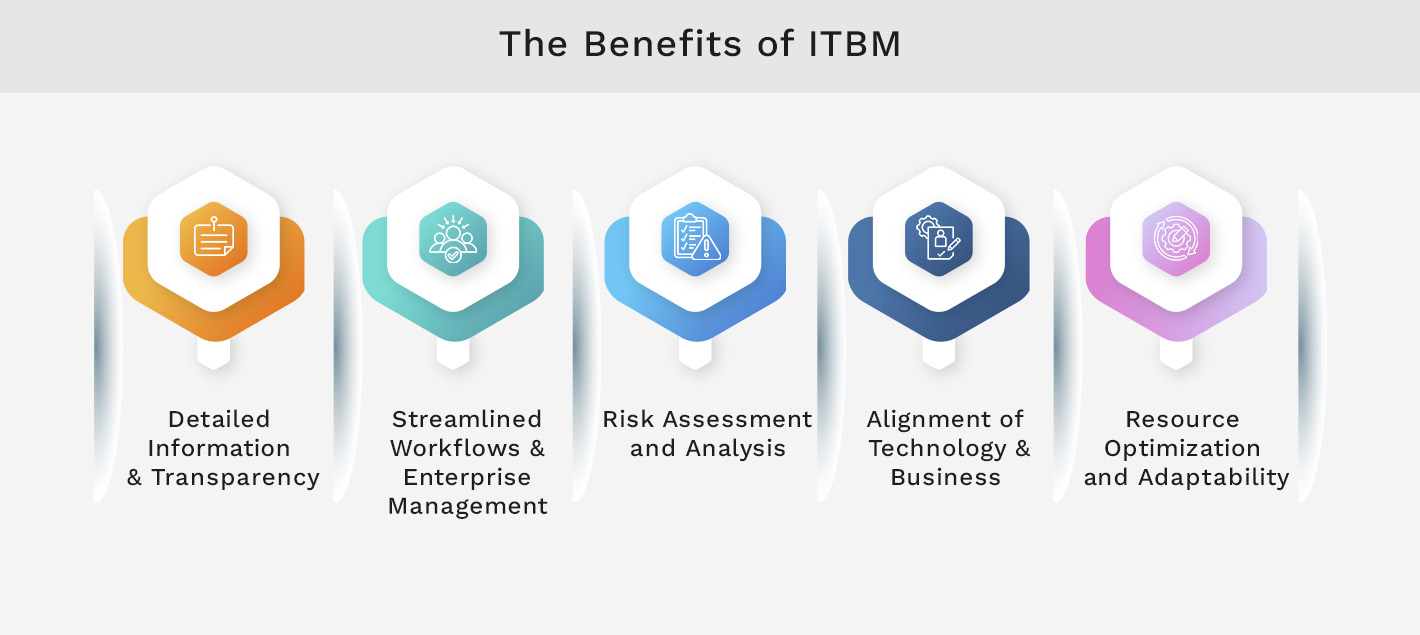
What Are the Key Components of ITMB
Understanding the key components of ITBM is essential for leveraging its full potential. Here are the main elements that make up an effective ITBM strategy:
Portfolio Management
Portfolio management in ITBM provides a clear view of all IT investments and their performance. It helps you understand how each asset or project supports your business goals. This approach allows informed decisions on where to invest and what to scale back.
This perspective also helps innovate responsibly, aligning new IT ventures with business growth. As IT portfolios become more complex, effective management ensures resources are dedicated to the most valuable initiatives.
Project Management
Project management is central to ITBM, turning strategic plans into actionable tasks and initiatives. It ensures every project is technically feasible, relevant, valuable, and supports the business goals.
ITBM's project management tools help manage every project phase, from planning to execution and closure, ensuring it meets or exceeds expectations. These tools also promote collaboration, allowing team members to coordinate easily and stakeholders to monitor progress with real-time reports.
Financial Management
Financial management in ITBM directs how financial resources are allocated and controlled, ensuring wise spending for maximum value. It combines traditional financial oversight with an understanding of IT value streams, aligning IT expenses with business outcomes and identifying areas for cost savings.
ITBM's financial management maintains transparent expenditures, justifies investments, and adheres to budgets aligned with the organization's strategic finance.
Demand Management
Demand Management in ITBM prioritizes and manages incoming iT requests effectively. It involves creating a strong mechanism that handles current demands while forecasting future needs. This ensures that IT efforts align with high-value projects and leads to more strategic investment decisions and optimized use of resources.
Innovation Management
Innovation Management in ITBM focuses on fostering creativity and implementing new ideas to drive business growth. It's a systematic approach that creates an environment where innovation is actively encouraged, tracked, and strategically realized.
In ITBM, Innovation Management is where market trends, customer feedback, and internal ideas merge to shape groundbreaking IT projects. Integrating innovation into the management process helps businesses ensure their IT strategies are ahead of the curve.
Governance
Governance is the framework that ensures IT activities follow the company's policies, regulations, and ethical guidelines. It keeps IT initiatives in line with business strategies and legal requirements, creating a responsible and accountable IT environment.
Effective governance includes clear rules and standards for IT decision-making, monitoring services, and project implementation. This minimizes risks, maintains data quality, and ensures resources are used in line with the organization’s goals.
Agile Development
Agile Development focuses on delivering value to customers quickly and adapting to change. It embraces principles like iterative development, team collaboration, and customer feedback to ensure IT projects can adjust to shifts in business priorities or market demands.
ITBM uses Agile practices to break large projects into smaller parts for frequent reassessment and adjustments. This increases productivity, improves output quality, and speeds up project timelines.
Application Portfolio Management
Application Portfolio Management (APM) in ITBM focuses on evaluating and managing the software applications used by a business. With APM, organizations can create a comprehensive list of their applications, assess how each contributes to business goals, and identify any technical gaps or redundancies.
Scenario Planning
Scenario Planning involves anticipating different future scenarios to stay ahead strategically. This proactive approach helps organizations prepare for various situations and develop plans to navigate them effectively.
With tools for simulating different investment scenarios, ITBM helps businesses assess the impact of strategic choices and align their IT portfolio accordingly. It acts as a risk mitigation and decision support tool, ensuring IT investments are resilient to changes and made with a clear understanding of their long-term effects on the business.
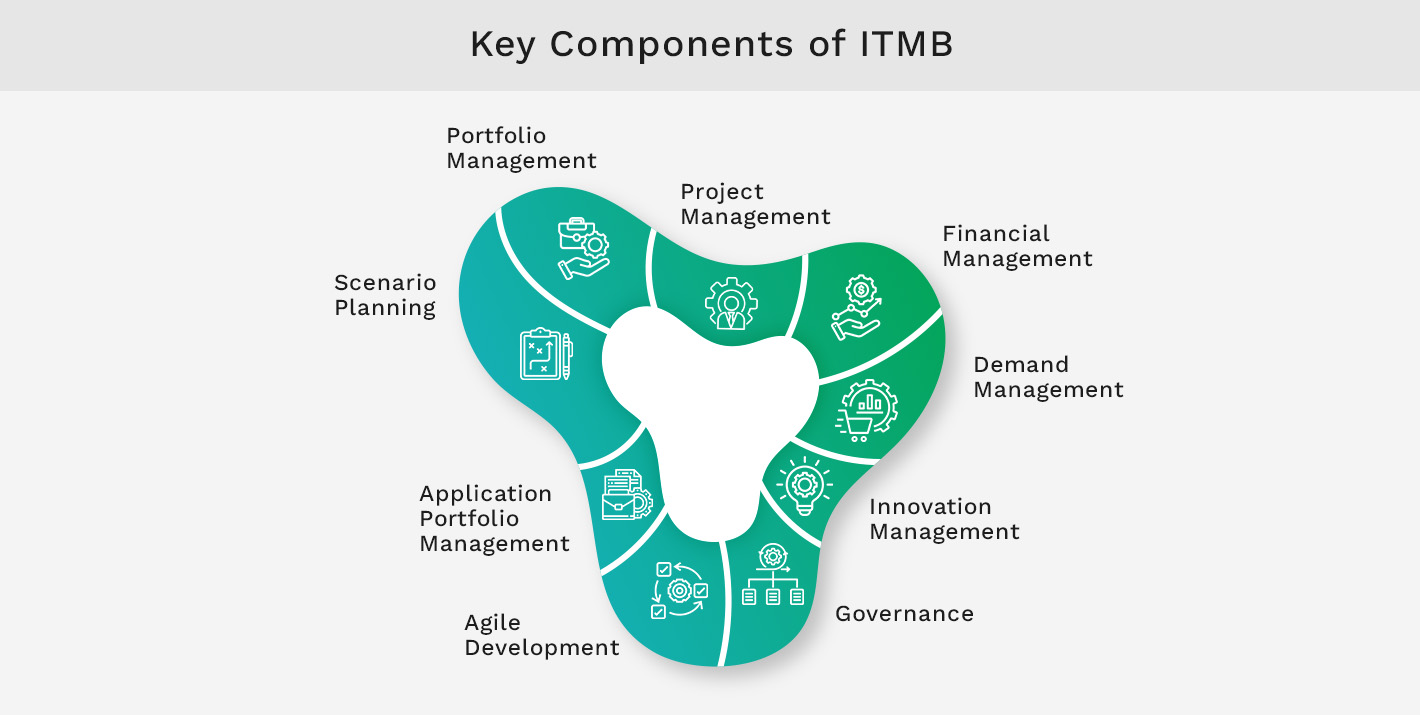
Manage Your IT Business with Kohezion
If you want to get a handle on your IT projects, look no further than Kohezion. This powerful software provides all the tools necessary to bring your IT management into the modern era. Manage tasks, collaborate with your team, and easily track progress in one place.
Kohezion offers a user-friendly and customizable platform that suits your organization's unique requirements. You can skip the one-size-fits-all solutions and opt for something that fits like a glove.
Whether you’re a startup or a well-established enterprise, Kohezion offers features that help improve productivity and eliminate chaos from daily operations.
Conclusion
IT Business Management is an essential blueprint for aligning IT initiatives with business strategies. IRBM provides increased transparency, streamlined workflows, and a focus on optimizing resources.
Embracing ITBM practices helps you stay competitive and driving growth. Integrating key components such as portfolio and project management, financial oversight, and agile methodologies helps organizations ensure they're making strategic IT decisions that propel them toward their business objectives.
Adopt ITBM, and give your IT operations the structure and support they need to thrive. In doing so, you'll ensure that your IT investments pay off and create a culture of innovation.
Contact us today to find out why Kohezion is the best ITBM solution for your business.
Start building with a free account
Frequently Asked Questions
ITBM practices ensure IT initiatives align with strategic goals, optimize resource use, and improve decision-making. This results in cost savings, increased productivity, and better risk management, all fostering a more resilient and competitive business.
Common obstacles in implementing ITBM solutions include resistance to change, lack of skilled personnel, and data silos. Overcoming these requires strong leadership, investing in training and change management, and ensuring interoperability of IT systems to facilitate data flow.
ITBM syncs IT projects with company objectives, sharing data across departments for informed decision-making and aligning IT resources with various business needs. This integration supports unified goals and streamlines operations.
ITBM provides tools to align IT projects with business strategies, manage risks, allocate resources efficiently, and prioritize investments based on business value. It enables performance tracking for informed decision-making on future projects.
